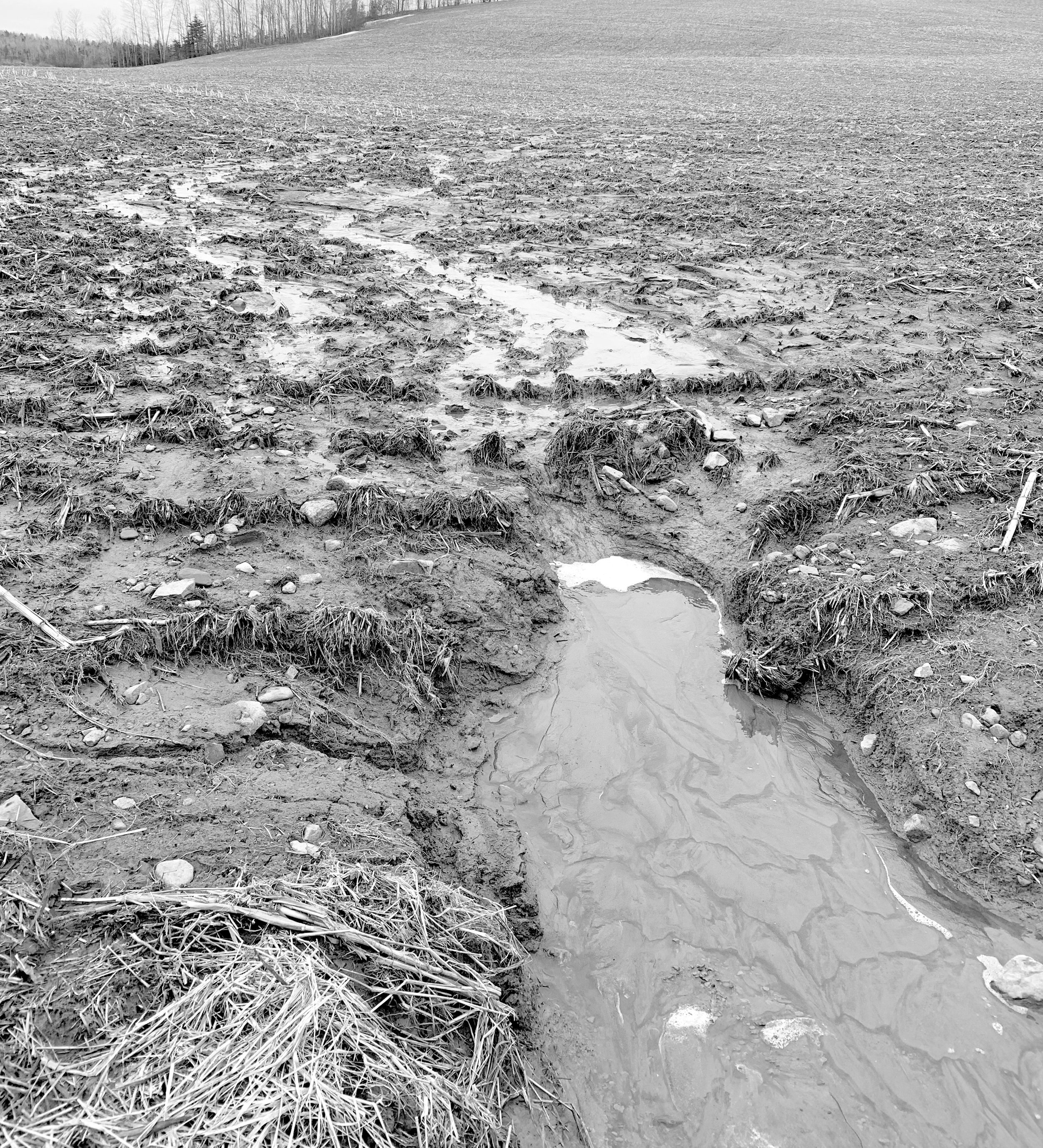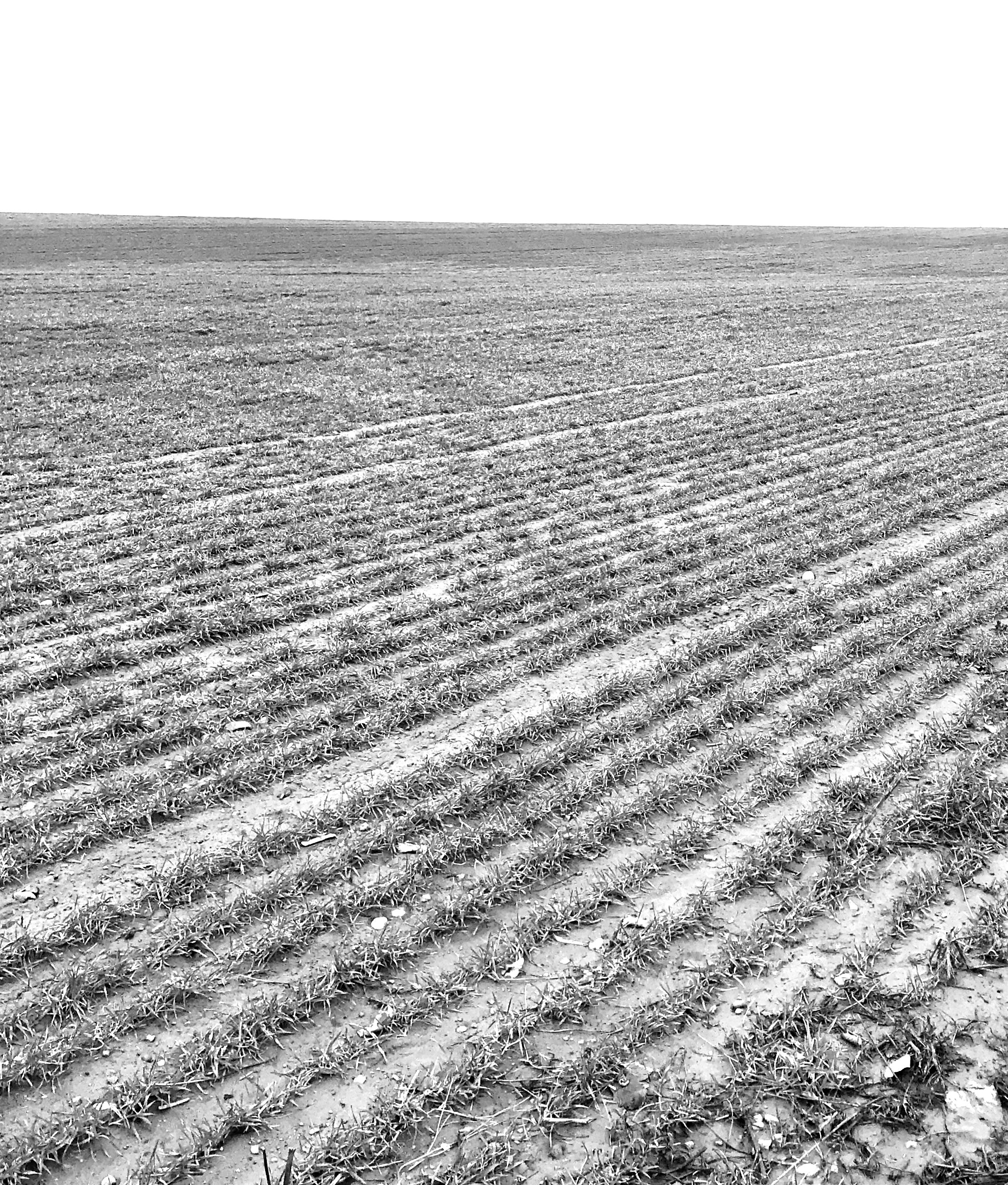Protect your precious topsoil by planting cover crops
/by Thomas Harrington
As many producers are in the midst of the busy fall harvest season, it could be nearing the last opportunity to establish a cover crop before winter. August and September are the safest times to reliably establish a cover crop, but if weather conditions are favourable, there may still be a few opportunities for late fall plantings.
As the term suggests, a cover crop is any crop planted with the purpose of providing protection to the soil. Cover crops are often not harvested as cash crops, although some winter-hardy species such as Winter wheat and rye may function as a cover crop during the fall and winter and can be harvested as a cash crop the following summer.
Keeping soils covered, particularly over winter, is one of the best ways to protect your land from degradation. When soils are left bare during winter, they are particularly susceptible to soil erosion by wind and water. Eroded soils are unhealthy soils, as the top few inches of a soil profile are the most productive and the movement of soil and nutrients from fields into watercourses poses numerous environmental concerns. Sedimentation in watercourses can degrade aquatic habitat, and nutrients or pesticides carried with soil particles reduce water quality.
Cover crops can prevent water erosion by several processes. Surface vegetation provides a physical barrier that slows down the speed of water droplets and scatters them before they contact the soil surface. This reduces splashing and displacement of soil particles, reducing the volume susceptible to transportation by surface water. A cover crop’s root network acts as an anchor to bind soil in place, and roots help increase the porosity of the soil so it can act more like a sponge and absorb water. Additionally, cover crops roughen the soil surface, so the speed of water moving across the soil surface is reduced and water has more opportunity to infiltrate the soil. Soil erosion caused by wind is also significantly reduced by cover crops due to their ability to hold soil in place.
Long-term use of cover crops can increase soil organic matter, improve soil structure, and generally improve soil health parameters. While growing into the late fall and early spring, they can facilitate the uptake of excess nutrients in the soil remaining from the previous crop and reduce over-winter losses. Agriculture and Agri-Food Canada’s Agri-Environmental Indicator Report Series (2011) estimated that in Nova Scotia, 84 percent of nitrogen losses from cropland occurs during the non-growing season.
Having a successful cover crop depends on proper management and planning. When thinking about planting a cover crop, it’s important to identify your primary goals, how the cover crop will be terminated, and how it will fit into your crop rotation. An excellent online cover crop selection tool for Eastern Canada is available at decision-tool.incovercrops.ca to help producers decide which crop will best fit their goals and planting windows.
Cover crops are commonly seeded following the harvest of a cash crop, but this can pose a challenge when the previous crop is harvested late in the season. Seeding can be done by broadcast or drilling, but there are other opportunities that can help with early establishment. Techniques such as under-seeding or inter-seeding can be used to help establish a cover crop earlier in the season, prior to harvesting the cash crop. This can give the cover crop a head start and reduce the risk associated with a fall seeding. However, proper management is essential to ensure the cover crop does not impede the growth of the cash crop.
While, ideally, every field will have a cover crop, sometimes a cash crop may be harvested too late for cover crop establishment. If it’s not possible to establish a crop before winter, it’s advisable to mulch fields that are at high risk of soil erosion. This can be accomplished using a bale processor to spread a layer of straw or hay over a field. This will help provide some protection to reduce the velocity of raindrops and slow water movement on the soil surface. Pay special attention to sloped areas of a field as these will be at higher risk of soil erosion.
There is some assistance available to help producers with the costs of establishing cover crops. In Nova Scotia, a new funding opportunity that’s part of the Agricultural Clean Technology Program will provide eligible producers $35 per acre (to $5,000 per applicant) for planting cover crops. Note that cover crop species must be recommended by a seed provider or a Perennia extension specialist. Perennia also has a no-till seeder that Nova Scotia producers can rent that’s suitable for seeding fall cover crops. Contact your Perennia extension specialist for more advice on incorporating cover crops into your rotation.
(Thomas Harrington is an agri-environmental specialist with Nova Scotia’s Perennia Food and Agriculture Inc.)













